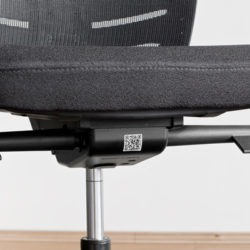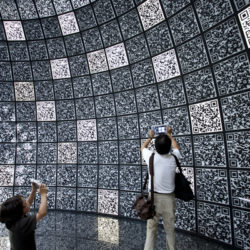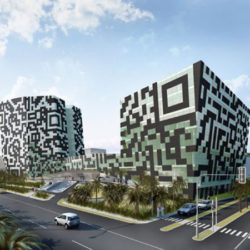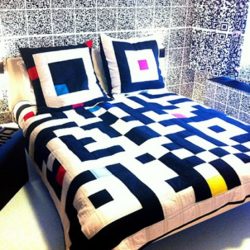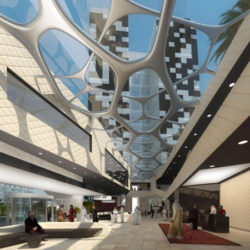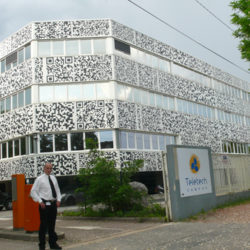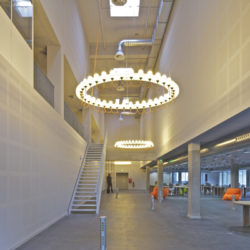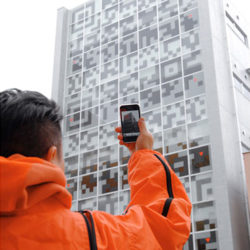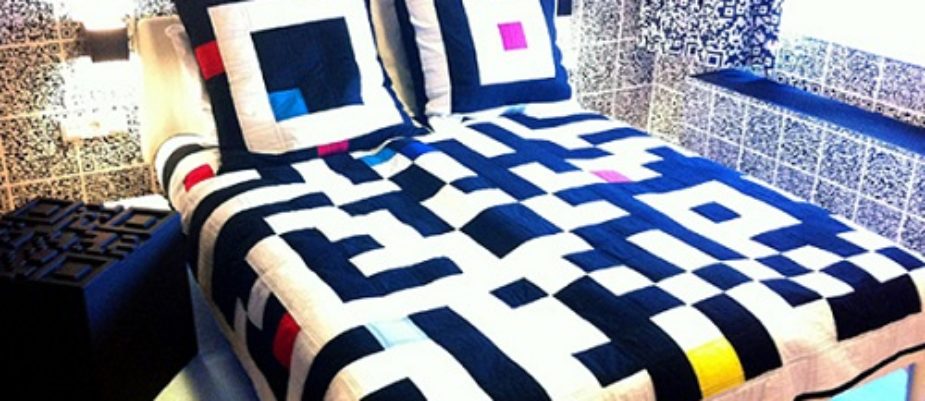
The augmented reality QR Code (Quick Read Code created by the Japanese Denso-Wave in 1994), has been spreading exponentially in the past few years, thanks to its fascinating potential, the applications of mobile devices and the help of social networks.
Actually, the ubiquitous square dots, that appear on magazines, catalogues, business cards, posters, can contain by a miracle texts, pictures and film clips in just a few centimetres, and the access is easy, you just frame the square in your smartphone, but it has also become a contemporary, ornamental icon.
Although the QR Code is commonly used for the virtual enlargement of contents, that space on paper would not contain, the QR phonomenon has taken more import due to the new life styles and multimedia communication and has inspired the designer’s creative imagination in architecture and interior design.
Entirely coverd with luminous QR Codes, the Padiglione Russia I-City was given a special mention by the jury during the 13th Biennale Architettura di Venezia “Common Ground” for the choice of this medium that, through an interactive digital tour, presented the project carried out by the Skolkovo Innovation Centre.
But the alternate use of the typical black and white dots went beyond the limits in the “porno-camera” designed by Antoine Peters for the design & fashion Hotel Modez, just opened in Arnhem, where the almost obsessive repetition of the QR (on upholstery, curtains, bedcovers, lamps, bedside tables) isn’t just an abstract decoration, but a guide in an erotic world of spicy texts and pictures.
On the other hand, back in 2008 the project for the Code Unique Hotel had already made use of the QR as the distinctive feature for its futuristic outlook. For the designers Soehne & Partner this choice wasn’t only an eyecatcher, but a metaphor. The hotel is a haven for businessmen and, as any haven, it’s an interface towards other worlds, other realities, right as the QR.
In Dijon, France, there is another interesting use of QR Code in architecture:
the call center and incubator Teletech at the former workshoo of the famous mustard Dijon, just renovated on a project by MVRDV “The building was in a good condition, yet its volumetry made it unfit for a conventional workplace. Also, the budget was too low to change the façade or for any drastic change in the structure. According to the designers, the balance between renovation and an intelligent re-use of the pre-existing was the essence of this project. The façade, transformed through the use of QR Codes leading to the company’s jobs, acts as communication medium and change signal”.
Vibrating signals of innovation are also found in the layout, where 600 call center operators work in flexible, informal and comfortable rooms with an excellent lighting. “The way young people often work, with a laptop on a sofa or bed, was a source of inspiration for the interior design: such space enables to work as the young operators like, furnished with domestic objects, that make the working environment enjoyable and creative”. Out of hours, the operators have at their disposal a fitness center, relax areas and an incubator for new projects.
But probably one of the most extreme designs of Qr fronts is the N Building, a shopping mall close to the station of Tachikawa in Japan, connecting with the outside in a dynamic way through its front: you can have updated information about the store and book your purchases. But the designers Terada Design and Qosmo wanted more: “Our outlook on the future includes a slide-away front, so that the people inside can also be seen from the outside”.
At the opening on December 15th 2009, the public was supplied with a purpose-made iPhone app; pressing on the characters, their online comments are shown as in a comics trip. “Our goal was to motivate people to visit the room and supply virtual connection with the inside space without being necessarily there”.
Did you create your QR Code business card?

